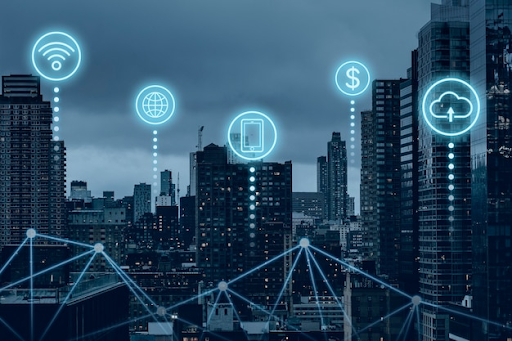News
Understanding Technology Disruption: Definition, Impact, and Examples

News

Technological disruption is a fundamental transformation as a whole related to the digital technology development system. For example, in some cases, the role of humans has begun to be replaced by robots.
Technological disruption clearly brings many benefits, such as facilitating human work, so it is important for businesses to be able to adapt to technological developments. Then, how to deal with this phenomenon?
The era of technological disruption makes everything instant, easy, and modern. This is certainly in line with the main purpose of the presence of technology, which is to facilitate human activities, such as working, communicating, seeking information, and others.
Moreover, recently there has been a major transformation in people's lifestyles and behavior as a result of the post-pandemic, both in Indonesia and globally. For example, online shopping activities are increasingly widespread and intense. This shopping system really allows people to still be able to meet their daily needs, even at home.
In simple terms, this change in habits from conventional shopping to online shopping is one example of technological disruption.
In more detail, citing Investopedia, technology disruption is a new breakthrough that is very influential in changing the existing system, the way consumers, industries, or markets operate from conventional to more modern or renewable utilizing digital technology.

From the explanation of the understanding of technological disruption above, it can be concluded that technological disruption is not limited to innovation and new technology that initiates change. However, a fundamental transformation that can massively change the entire order because it affects the changing ways, habits, norms, and lifestyles.
Next, some of the causes of the emergence of technological disruption are as follows.
Digital technology is developing very rapidly and its distribution has expanded to all corners of the city.
Evidence of its development is the availability of an internet network that reaches all corners of the country. The presence of the internet network makes it easy for users to get and share information in real-time and unlimited. This technological development was later known as the 4.0 revolution.
Another sign of this revolution is the skyrocketing integration and interconnectivity where all ecosystems are becoming more and more connected. For example, the skyrocketing use of IoT or the Internet of Things, information system connectivity, and the emergence of various AI or artificial intelligence-based technologies.
The emergence of new businesses that have a strong foundation with a technology base also brings major changes to market operations.
These newcomer businessmen develop innovations and improve human resources so that they are able to shift the position of the existing business. For business models that are not ready to transform, they are prone to lose competitiveness.
The development of digital technology is intended to facilitate all human activities and because of that convenience ultimately changes human behavior. Previously, all activities related to physical activity, now shopping or other activities can be done through the palm of the hand.
On the other hand, this change in behavior causes people to have two lives, namely real life and the digital world. And both are flexibly constantly changing and these changes are hard to predict.
As a result, these changes are capable of producing technological disruption.

It has been mentioned that technological disruption is a major technological change. Technological disruption has had a significant impact on the business world. Technological disruption plays a role in changing technology to become more sophisticated and brings convenience to activities. However, for companies that have not been able to adapt to changes, they will definitely lose competitiveness.
For example:
The three disruptive technologies that are the key to technological disruption are as follows.
One of the keys to technology disruption is software. Application or software development is closely related to changes in companies that are transforming to digital systems.
Especially now that data that was previously in physical form must enter the cloud in large and complex quantities, of course it will be difficult to process if there are no modules that utilize software.
Changes in the company's operations from conventional to modern with this software and can embrace customers in new ways, develop services and products to be more innovative and up-to-date, and increase customer satisfaction.
The second key to technology disruption is automation. In addition to convenience, the key to the digital era is speed. Business in this era is very competitive and operational processes are required to be carried out quickly.
Therefore, you need an automation team and its tools to support business development with satisfactory results.
In fact, nowadays many companies practice automation to cope with a number of workloads. As a result, companies can invest in improving the competence and quality of human resources so that output is optimal.
Technology has successfully changed consumer behavior. As a result, companies are affected by developing and changing their operations.
The development team is required to bring new breakthroughs and fast updates. At the same time, companies must continue to operate in order to provide user experience and achieve their business goals.
Therefore, many enterprises are using DevOps strategies to accelerate product or output launches and improve user experience and productivity as well as collaboration between teams.
Also read: Open Banking in 2022 Accelerates Banking Digitalization
Business owners definitely want an agile business, which can adapt to the times and is also successful in its business. Even so, keep in mind that digital will not be able to replace brand image, trust, and service quality. For that, some steps you can take to deal with the era of technological disruption are the following.
HR or human resources is the main asset for a company or organization. Employees who have good integrity and competence, and are easy to master new technology developments will bring the company an advantage over competitors.
For this reason, one way to improve the quality of human resources as a step to deal with technological disruption is by transforming culture to change culture and mindset, as well as increasing the digital capabilities of human resources. This is the main foundation for the digital transformation carried out by BRI to develop this banking giant to be more agile and adaptable in digital adoption.
Start adapting relevant technologies to support business operations. One of the challenges of the era of technological disruption is the rapid emergence of game-changer tech.
BRI's way to always be able to keep up with technological developments is to ensure that digital talent specializes in this field, looks for relevant use cases in banking, creates innovations that can lift BRI's market segment, and disseminates it throughout the BRI network.
For example, BRI developed BRIAPI as an open banking technology that can improve the effectiveness and transaction experience for businesses. This encourages integration and shaping which in technological disruption is key. In addition, BRIAPI technology is also able to streamline the costs incurred both for businesses and for BRI to be able to be connected to each other.
The third step in dealing with technology disruption is cybersecurity. Digital transformation has made it easier for various entities and ecosystems to be more integrated, especially in the era of open banking. Thus, further increasing the exposure to personal data as a result of various data processing and exchanges that occur in it. This certainly increases the risk of cybersecurity and fraud as a result of the high traffic.
For this reason, in adopting technology, it is also necessary to prepare a framework that is able to protect consumer and business data, especially personal identifiable information (PII). For example, by meeting international standards for data security, establishing a security perimeter, activating the role of CISO, and cross-sector collaboration to build security.

Technological disruption is a disruption in the field of technology and now brings many new technologies that are very helpful for humans. Today, there are so many examples of technological disruption. Including the following.
One example of technological disruption is Artificial intelligence (AI), which is a digital mechanism created to be able to resemble human intelligence, especially to complete simple tasks. AI is able to search, collect data in the cloud, store, process, and display data carefully. Based on processing and analysis, AI is also able to assist the process of problem solving, formulation, which helps make decisions and answer problems.
In the banking sector, AI is able to optimize work efficiency and mitigate risk. At BRI, for example, implementing AI through BRIBRAIN, BRI's big data platform which is the central hub for various AI solutions for various lines of business and operations. Among them are to improve the performance of front office services and customer engagement, the middle office to support payment, processing, and credit underwriting), to the back office for smart service and operation as well as fraud prevention.
Furthermore, there are technologies that have special abilities to present virtual and additional reality in 3D called augmented reality and virtual reality.
With this excellent feature, people are helped when they need to imagine something and determine what they need easily. One example is educating the public about the history of the currency in Indonesia.
This era of revolution 4.0 also produces sophisticated robotics that is able to automate simple human tasks. Through this technology, the robot is able to operate independently after receiving orders from the owner.
Robotic Process Automation or RPA is a technology used to automate business processes. In the banking world, the application of RPA can make it easier for customers so that various banking activities can be processed automatically, for example in processing payments, deposits, withdrawals, and other banking transactions.
BRI has also implemented RPA as a substitute for manual data entry for smart office and operations.
Cloud computing technology is an internet infrastructure system that provides a secure, large capacity, and intelligent storage area for user applications and data. Banks usually use cloud services so that the data they store is safe and can be quickly accessed.
Currently, BRI also utilizes cloud technology as a data center to secure customer data and speed up the recovery process if anything happens.
On the other hand, there is also a digital technology disruption in banking called open banking via API. API is an Application Programming Interface which is one of the innovations of banking in the form of open banking, which is a service that connects banking products or services owned by banks with those of customers, both individual and non-individual customers.
In BRI bank, this API is called BRIAPI. Through services from BRIAPI, customers can use BRI services through various applications, for example payments in e-commerce. In this case, the payment system is directly integrated with BRI's products or services. These products include BRI Direct Debit, BRIVA, and QRIS.
Also read: Understanding the Acceleration of Digital Transformation Through BRIAPI Open Banking
From the explanation above, technological disruption is a major and significant change in human life. In short, technological disruption is technological progress for the nation if the people are able to manage it properly and wisely.
Technological disruption is something that needs to be addressed. In order to continue to be able to provide the best for customers, various industries and businesses carry out various innovations. In the banking sector, digital banking is getting stronger. Both digital banking for internal banks, as well as for consumers. Bank BRI itself is digitizing core banking and plans to have one application where all digital products for complete customers are there.
In addition, BRI bank also presents open banking through BRIAPI. BRIAPI makes it easy for the public to transact digitally and in real time, through various applications.
Admin
Ask questions or report issues to the BRIAPI Admin via email.
Sabrina
Get products information from BRI virtual assistant via WhatsApp.